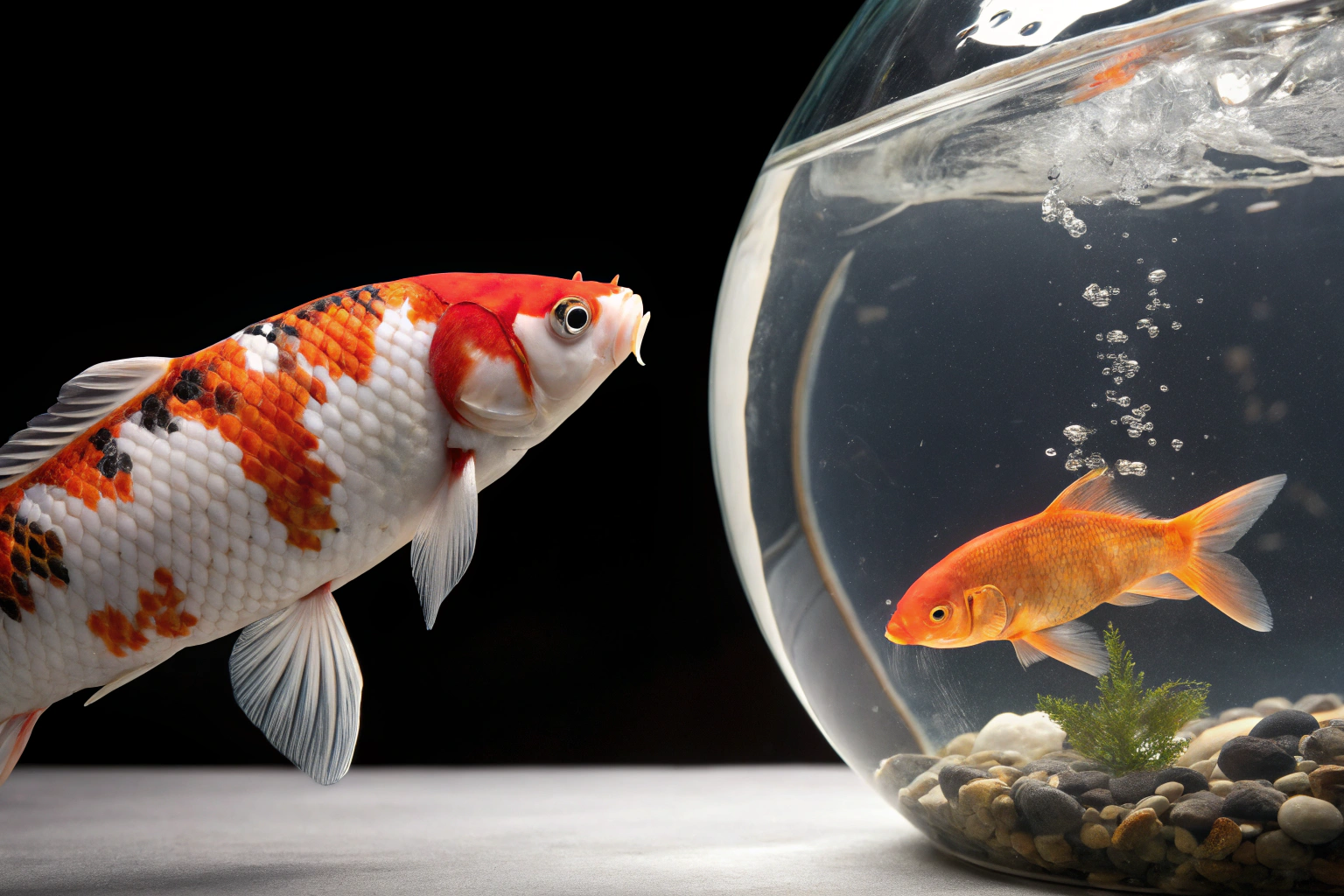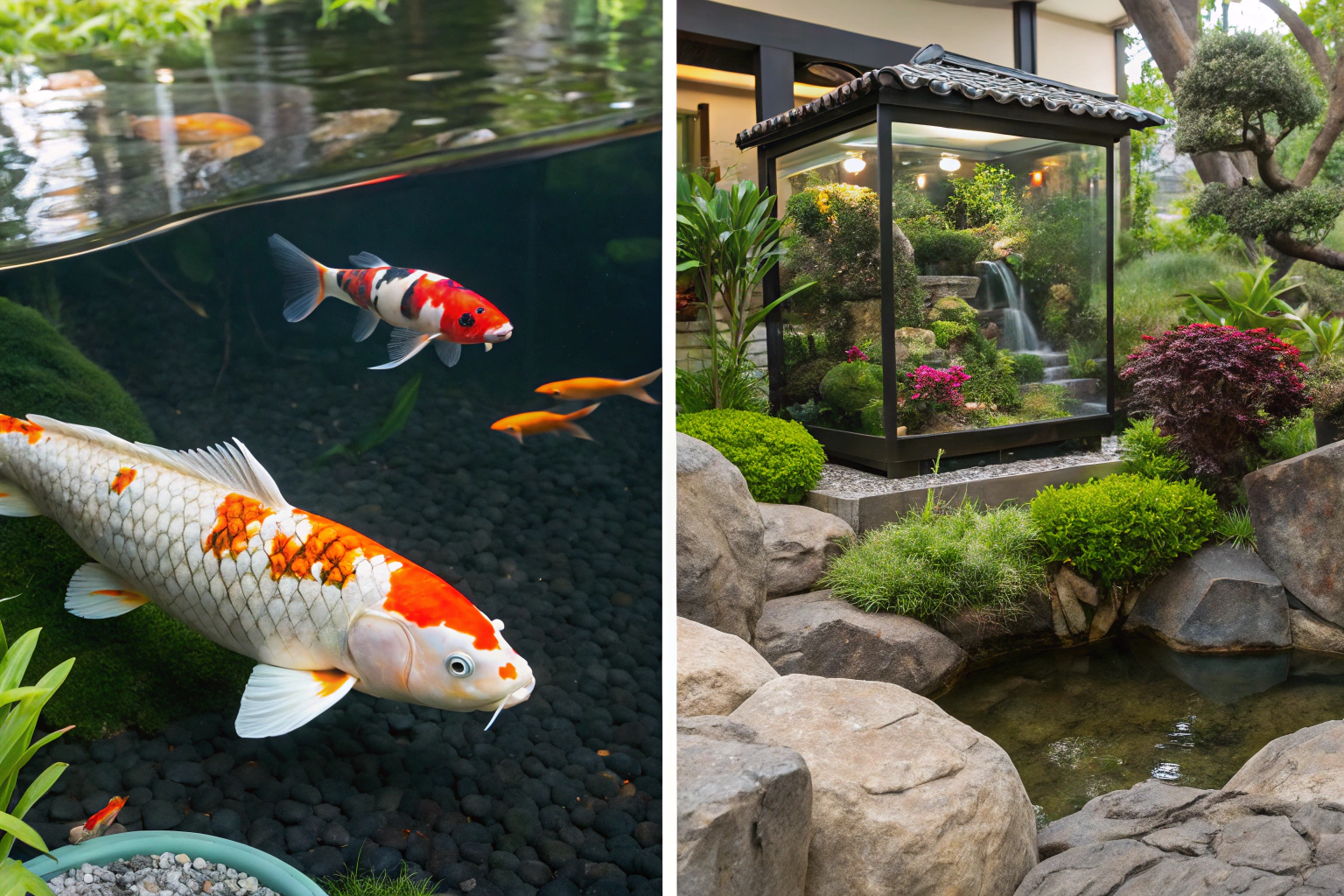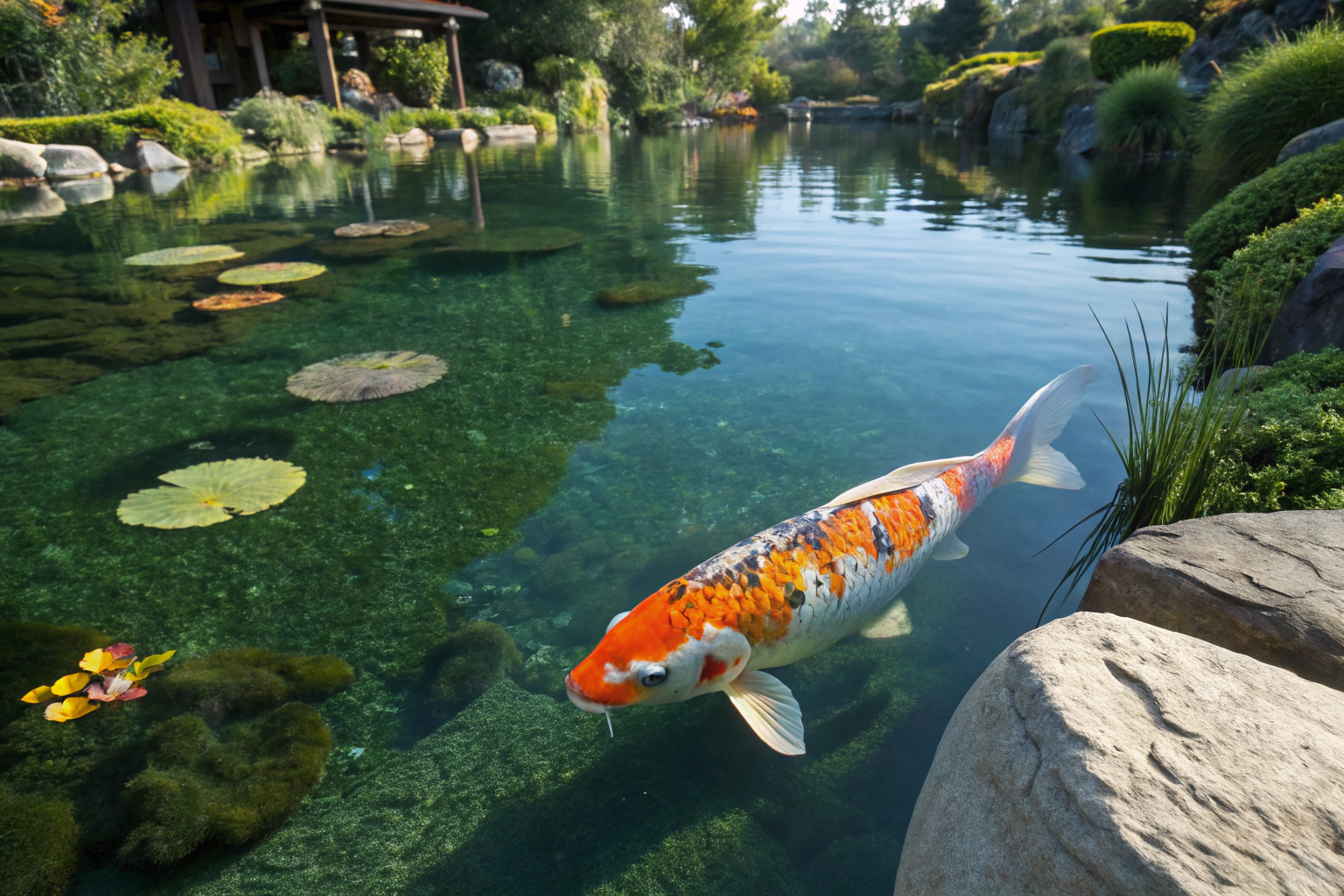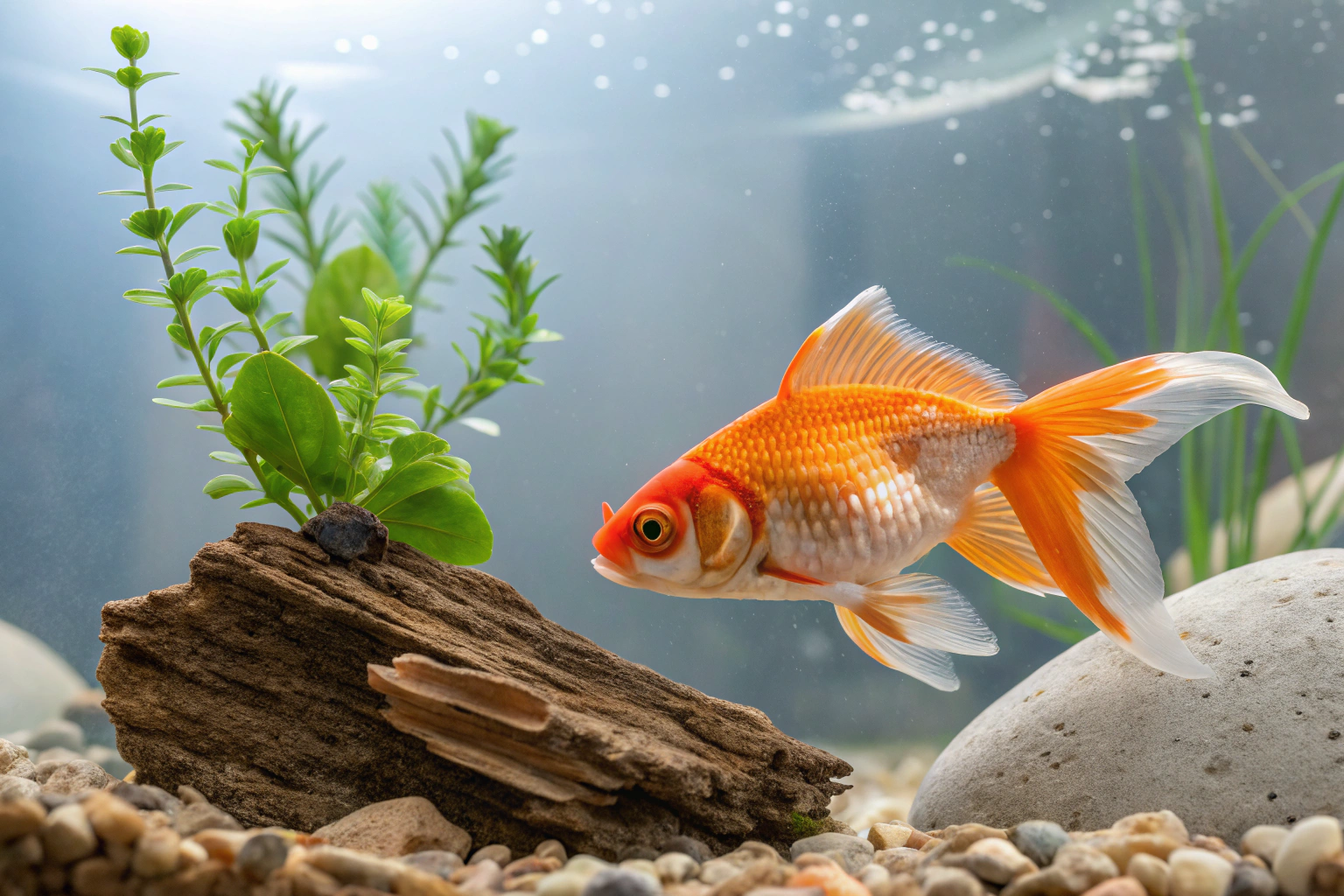Which is Easier to Care For: Koi or Goldfish?
This post may contain affiliate links.
Introduction
Choosing between Koi and Goldfish for your aquatic setup involves more than just aesthetic preference; it delves deep into understanding their distinct care requirements. Both are popular choices for aquatic enthusiasts, but their needs in terms of space, water quality, diet, and environment vary significantly. This article will explore the specific care needs of Koi and Goldfish to help you determine which species might be a better fit for your lifestyle and resources.

Understanding Koi Care
Space Requirements
Water Quality and Filtration
Diet and Feeding
Temperature and Environment
Understanding Goldfish Care
Space Requirements
Water Quality and Filtration
Diet and Feeding
Temperature and Environment
Key Differences and Similarities
Which is Easier to Care For?
Conclusion
Koi, often revered for their vibrant colors and graceful movements, are a popular choice for outdoor ponds. However, their care requirements are significant, primarily due to their size and longevity.

Space Requirements
Koi are large fish, capable of growing up to 2-3 feet in length. This necessitates substantial space. A general rule of thumb suggests at least 240 gallons of water per fish in an outdoor pond that is at least 3 feet deep. Some sources even recommend 10 gallons of space for every inch of their body length. Overcrowding can lead to stunted growth, poor health, and increased waste production, making water quality difficult to maintain.
Water Quality and Filtration
Maintaining pristine water quality is paramount for Koi health. They require a well-filtered pond with excellent aeration. Regular water changes, typically 10-20% weekly, are crucial to remove toxins and maintain optimal parameters. The ideal pH range for Koi is between 7.0 and 8.5. A robust filtration system, including mechanical and biological filtration, is essential to handle the significant bioload produced by these large fish.

Diet and Feeding
Koi are omnivorous and thrive on a varied diet. High-quality Koi pellets should form the staple of their diet, supplemented with fresh vegetables, fruits, and occasional protein sources like worms or insects. Overfeeding can lead to water quality issues and health problems for the fish. Feeding frequency should be adjusted based on water temperature, with less food offered in cooler months.
Temperature and Environment
Koi prefer cooler water temperatures, ideally between 75-82°F (24-28°C). They are hardy fish and can tolerate a range of temperatures, but sudden fluctuations should be avoided. A deep pond provides thermal stability, protecting them from extreme heat in summer and allowing them to safely overwinter in colder climates. Proper pond design, including shaded areas and adequate depth, contributes to a stable environment.
Goldfish, while often perceived as low-maintenance pets, also have specific care requirements that are frequently underestimated. Their smaller size makes them suitable for aquariums, but proper care is still essential for their well-being.

Space Requirements
Unlike Koi, Goldfish do not require a pond. However, they still need adequate space. A common misconception is that Goldfish can thrive in small bowls. In reality, a single fancy Goldfish requires at least 20 gallons of water, with an additional 10 gallons for each subsequent Goldfish. Common Goldfish and Shubunkins, which grow larger, need even more space, ideally in larger tanks or outdoor tubs. Adequate space prevents stunting, promotes healthy growth, and helps maintain water quality.
Water Quality and Filtration
Maintaining good water quality is crucial for Goldfish. They are sensitive to ammonia and nitrite, so a well-cycled aquarium with proper filtration is necessary. Weekly partial water changes of 10-25% are recommended to remove waste and replenish essential minerals. The ideal pH range for Goldfish is between 7.0 and 8.4. A good filter system, including mechanical and biological filtration, is vital to keep the water clean and healthy.
Diet and Feeding
Goldfish are omnivores and should be fed a high-quality Goldfish-specific diet. Their diet can be supplemented with blanched vegetables, bloodworms, and brine shrimp. It’s important not to overfeed, as this can lead to digestive issues and pollute the water. Feeding small amounts multiple times a day is generally better than one large feeding.
Temperature and Environment
Goldfish prefer cooler water temperatures than many tropical fish, typically ranging from 65-75°F (18-24°C). Fancy Goldfish prefer slightly warmer temperatures (68-74°F) than common Goldfish and Shubunkins (60-70°F). They are cold-water fish and do not require a heater in most indoor environments. Stable water temperatures are important, and sudden changes should be avoided. Providing adequate lighting for 6-8 hours a day is also beneficial for their health and well-being.
Key Differences and Similarities
The fundamental difference between Koi and Goldfish care lies in their size and the environment they inhabit. Koi are pond fish, requiring vast amounts of space and robust outdoor filtration systems. Goldfish, while often kept in aquariums, still demand significant tank sizes and consistent water maintenance. Both species require excellent water quality, proper filtration, and a balanced diet. However, the scale of these requirements differs dramatically. Koi, due to their size, produce a much larger bioload, necessitating more powerful filtration and more frequent, larger water changes in a pond setting. Goldfish, while smaller, are still messy eaters and require diligent aquarium maintenance.
Another key difference is their temperature preference. Koi prefer cooler water but can tolerate a wider range, especially in deep ponds that offer thermal stability. Goldfish are also cold-water fish, but their ideal temperature range is generally narrower and slightly warmer than Koi, particularly for fancy varieties. Longevity is another factor; Koi can live for several decades, even over 50 years, becoming a long-term commitment. Goldfish typically live for 10-15 years with proper care, though some can live longer.
Which is Easier to Care For?
Given the detailed care requirements, it becomes clear that Goldfish are generally easier to care for than Koi, especially for beginners or those with limited space. Here’s why:
- Space: Goldfish can thrive in large aquariums, making them suitable for indoor environments. Koi, on the other hand, necessitate a dedicated outdoor pond, which requires significant investment in construction, filtration, and maintenance.
- Cost: The initial setup and ongoing maintenance costs for a Koi pond are considerably higher than for a Goldfish aquarium. This includes the cost of the pond itself, powerful filtration systems, and larger quantities of food.
- Longevity and Commitment: While both are long-lived pets, Koi’s extended lifespan (often decades) represents a much longer-term commitment. Goldfish, with a typical lifespan of 10-15 years, are still a commitment but generally less demanding over the long run.
- Water Management: While both require excellent water quality, managing the water parameters in a large outdoor Koi pond can be more challenging due to environmental factors and the sheer volume of water. Aquarium water changes for Goldfish are more manageable for the average hobbyist.
However, it’s crucial to reiterate that “easier” does not mean “easy.” Both Koi and Goldfish require diligent care, proper nutrition, and a suitable environment to thrive. Neglecting their needs can lead to health issues and a shortened lifespan for either species. The choice ultimately depends on your resources, space, and willingness to commit to the specific demands of each fish.

Conclusion
In conclusion, while both Koi and Goldfish offer unique beauty and companionship, their care requirements differ significantly. Koi demand substantial outdoor pond space, robust filtration, and a long-term commitment, making them a choice for dedicated aquarists with ample resources. Goldfish, while still requiring proper aquarium setups and consistent care, are generally more manageable for those with less space or experience. Understanding these distinctions is key to providing a healthy and thriving environment for your aquatic companions. Before making a decision, thoroughly research the specific needs of each species and assess your capacity to meet them. For more detailed information on setting up and maintaining a healthy aquatic environment, consider exploring resources on aquarium care and pond maintenance.
